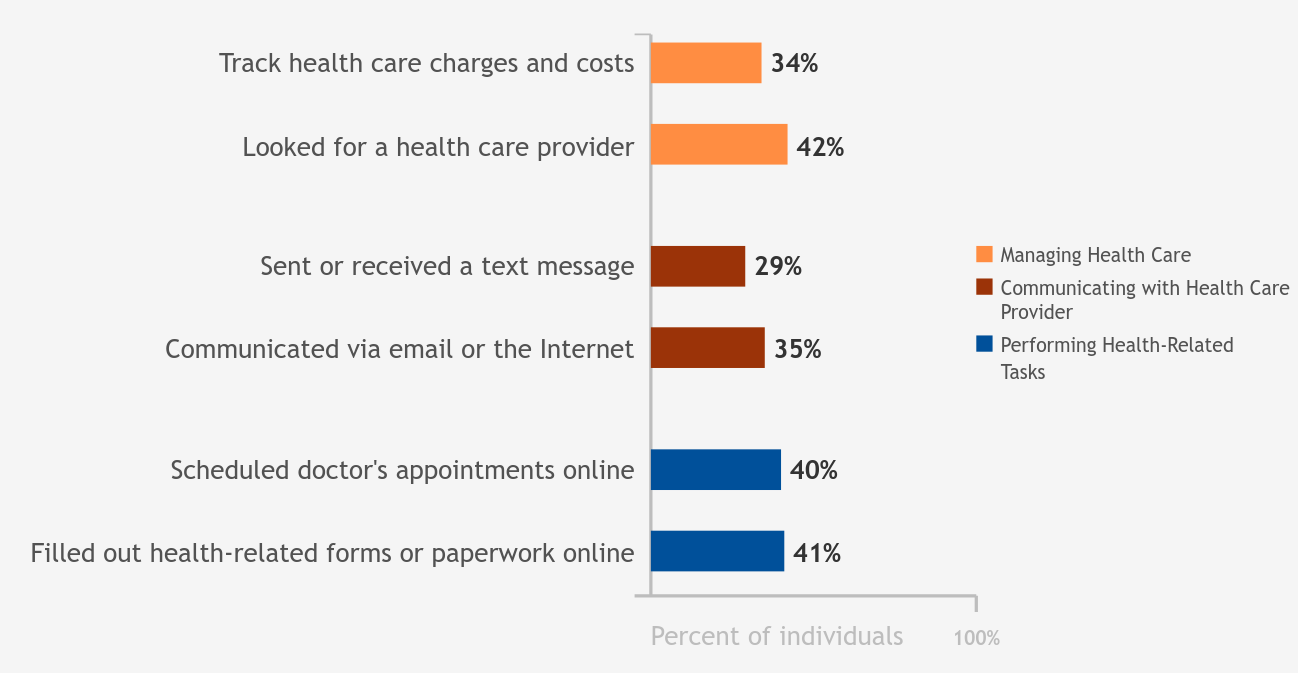
Overall, 1 in 3 individuals tracked health care charges and costs with a computer, smartphone, or other electronic means in the past 12 months. About 4 in 10 individuals filled out paperwork related to their health care or made health care appointments…
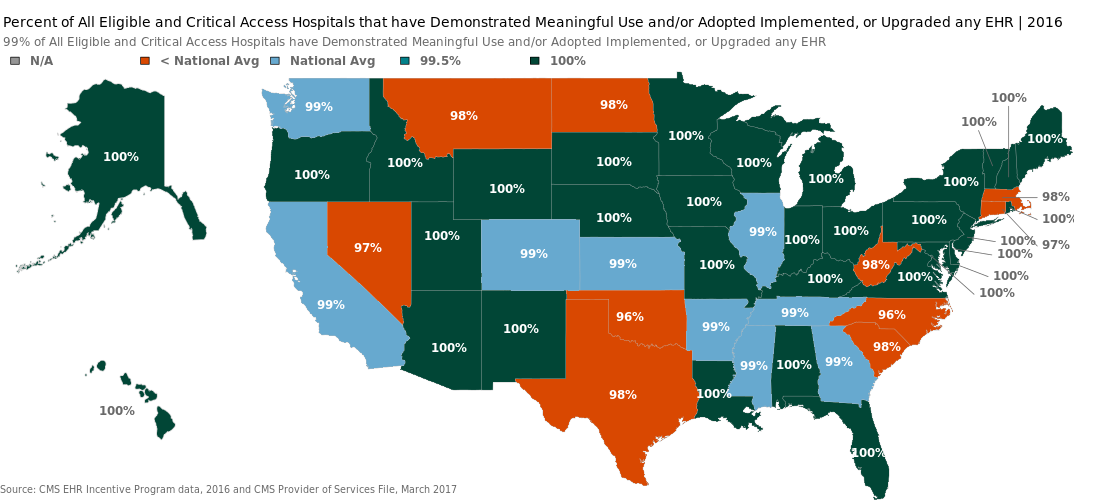
As of 2016, over 95 percent of all eligible and Critical Access hospitals have demonstrated meaningful use of certified health IT through participation in the Centers for Medicare & Medicaid Services (CMS) Electronic Health Record (EHR) Incentive…
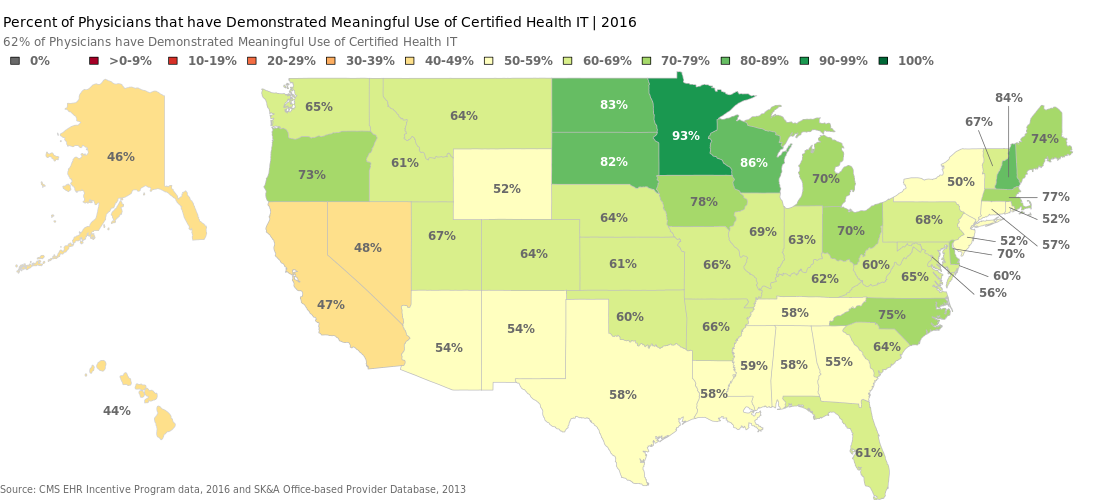
As of the end of 2016, over 60 percent of all U.S. office-based physicians (MD/DO) have demonstrated meaningful use of certified health IT in the Centers for Medicare and Medicaid Services (CMS) Electronic Health Record (EHR) Incentive Programs. Over…
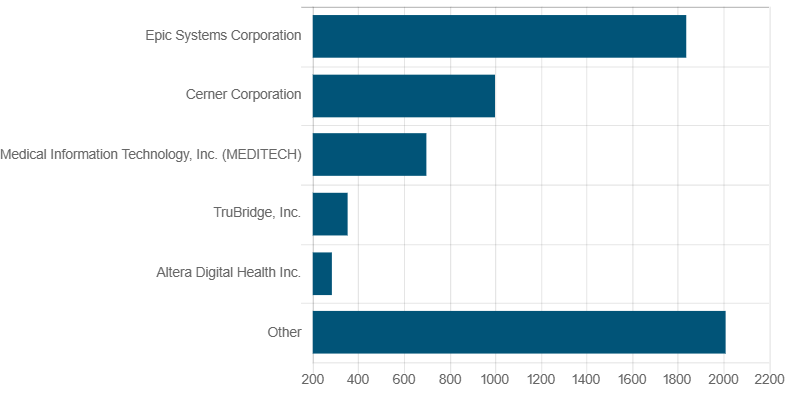
4,046 non-federal acute care hospitals reported in 2023 of the Medicare Promoting Interoperability Program. Analysis of the public dataset, Certified Health Information Technology Reported by Hospitals for Promoting Interoperability Performance (https://…
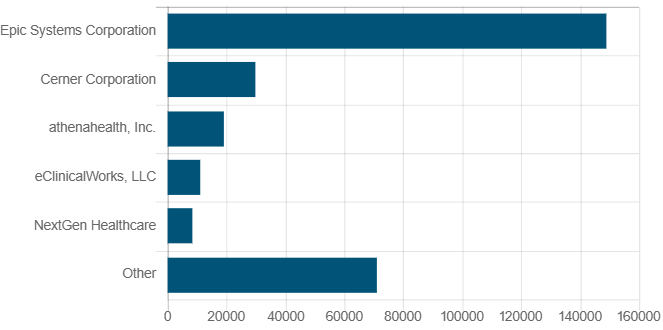
240,207 eligible clinicians participated in the CMS Quality Payment Program and reported for Promoting Interoperability in 2023. Analysis of the public dataset, Certified Health Information Technology Reported by Clinicians for Promoting Interoperability…
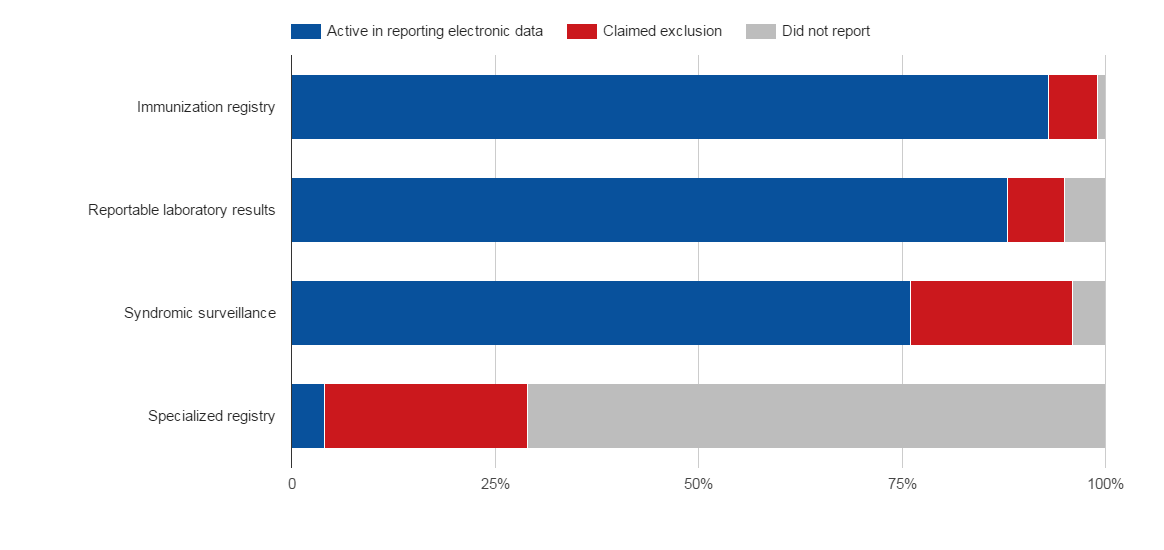
In 2015, 4,043 eligible and Critical Access hospitals (EH) reported to the Medicare EHR Incentive Program. 90 percent of hospitals attested to stage 2 of meaningful use. 93 percent of all hospitals reported active engagement with an immunization registry…
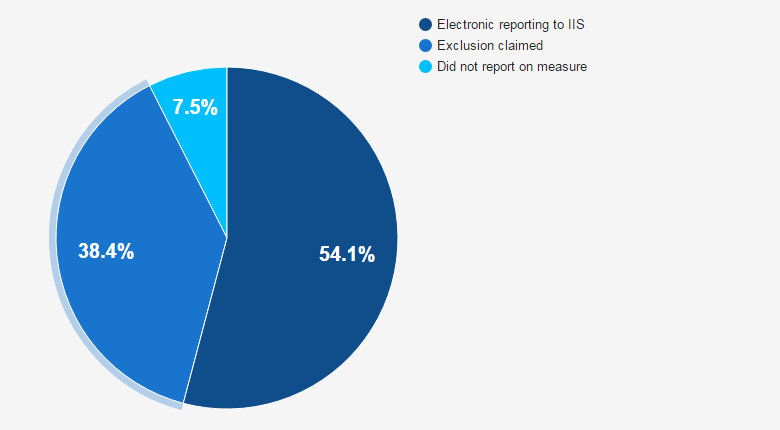
In 2015, 54 percent of eligible professionals (EP) participating in Stage 2 of the Medicare EHR Incentive Program and 44 percent of professionals participating in modified stage 2 electronically reported immunizations to local registries.
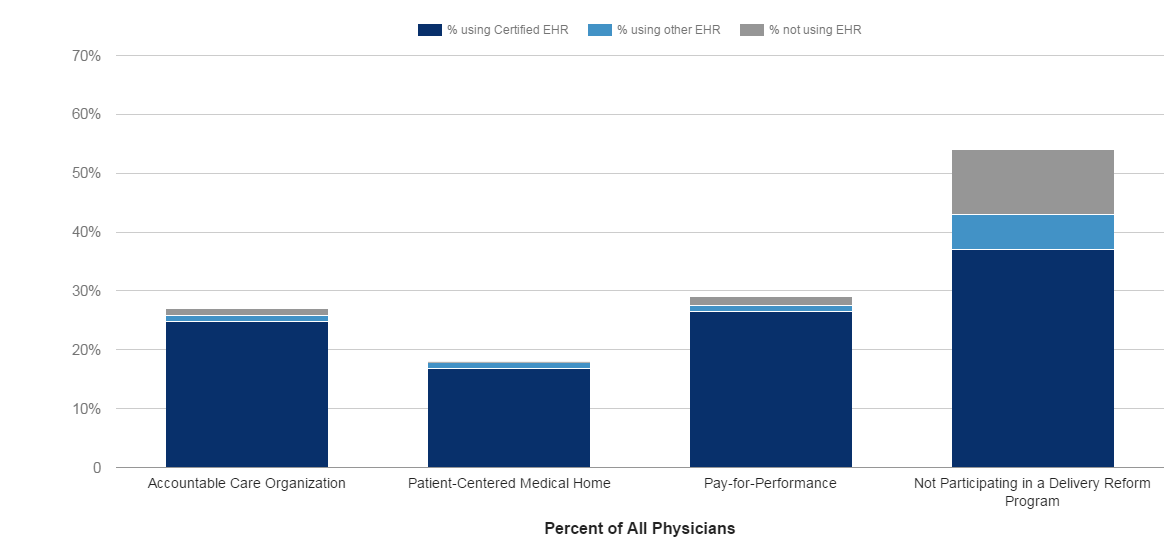
In 2015, <br/> reported use of a certified EHR, and 46% of all physicians reported participating in a delivery system reform program. Of those physicians participating in a delivery reform program in 2015, 90% reported using a certified EHR. Of all…
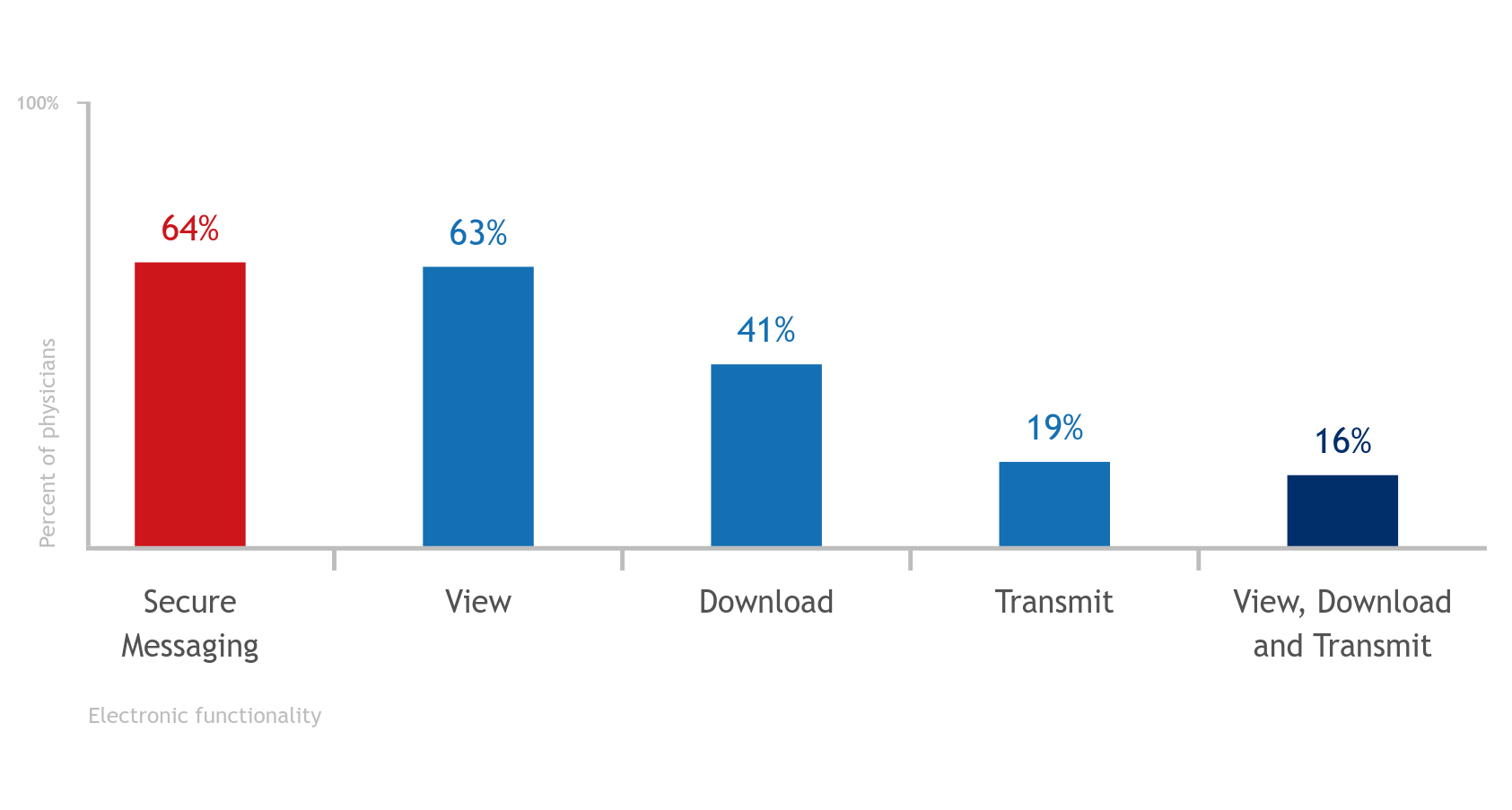
In 2015, 64% of physicians had an electronic health record (EHR) with the capability to exchange secure messages with patients, <br/>. Furthermore, 63% of physicians had the capability for their patients to electronically view their medical record…
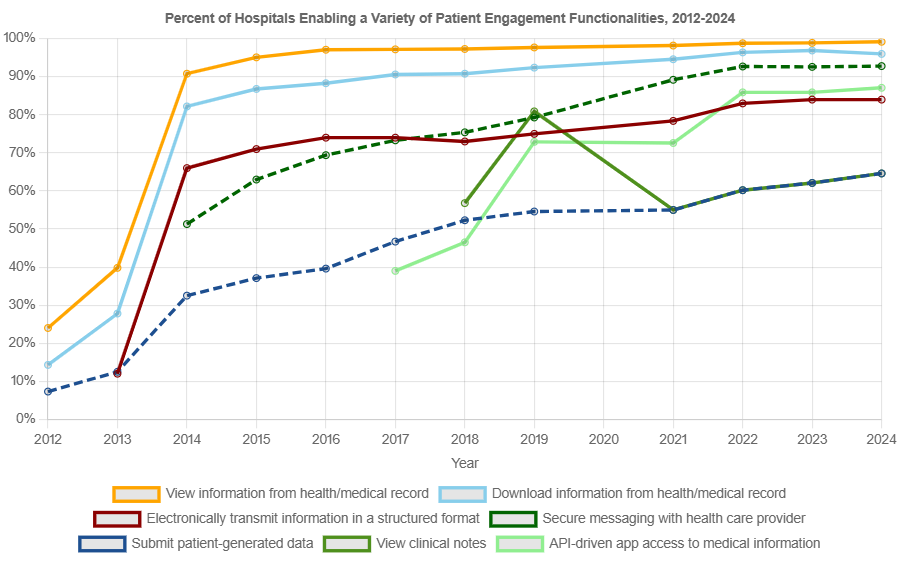
From 2012 to 2024, U.S. non-federal acute care hospitals reported a gradual increase in patients’ ability to access their health information and engage with hospital providers. By 2024, nearly all hospitals enabled patients to view and download their…
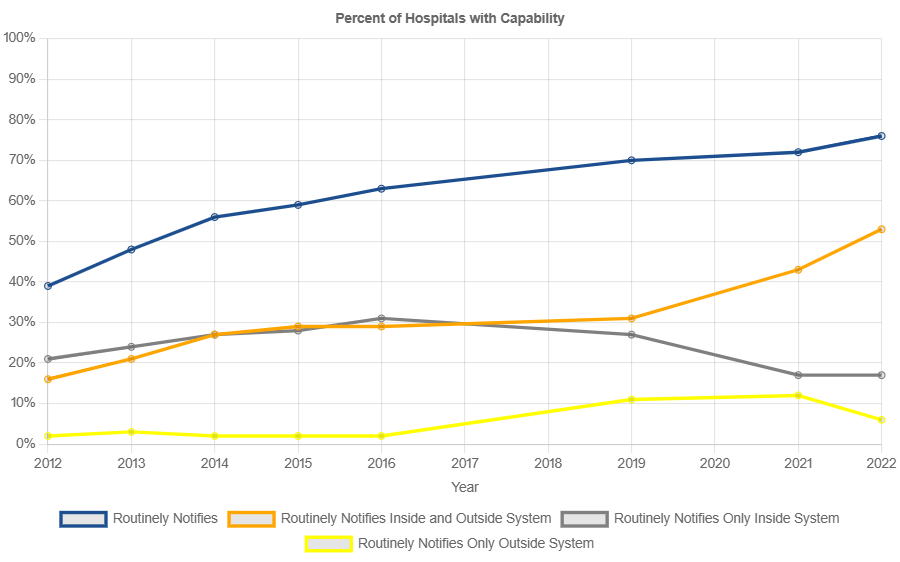
In 2022, 3 in 4 non-federal acute care hospitals routinely electronically notified a patient's primary care provider upon his or her entry to the hospital's emergency department – a nearly two-fold increase since 2012. Seventy percent of all…
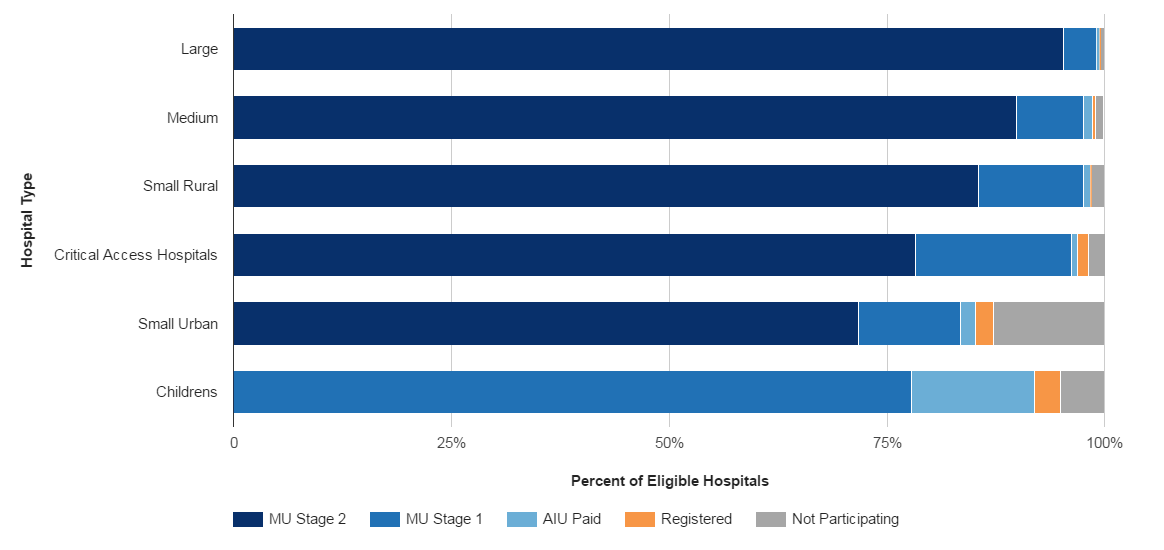
This figure was published in the March, 2013 ONC Data Brief, <br/>.
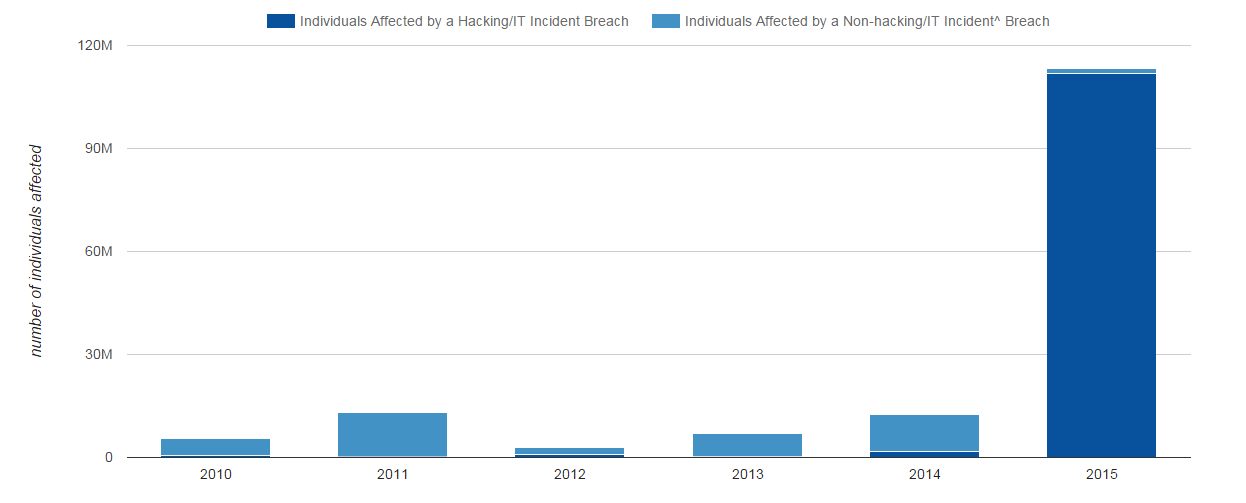
Based upon data collected by the HHS Office for Civil Rights, as of February 1, 2016, protected health information breaches affected over 113 million individuals in 2015. In 2015, hacking incidents comprised nearly 99% of all individuals affected by…
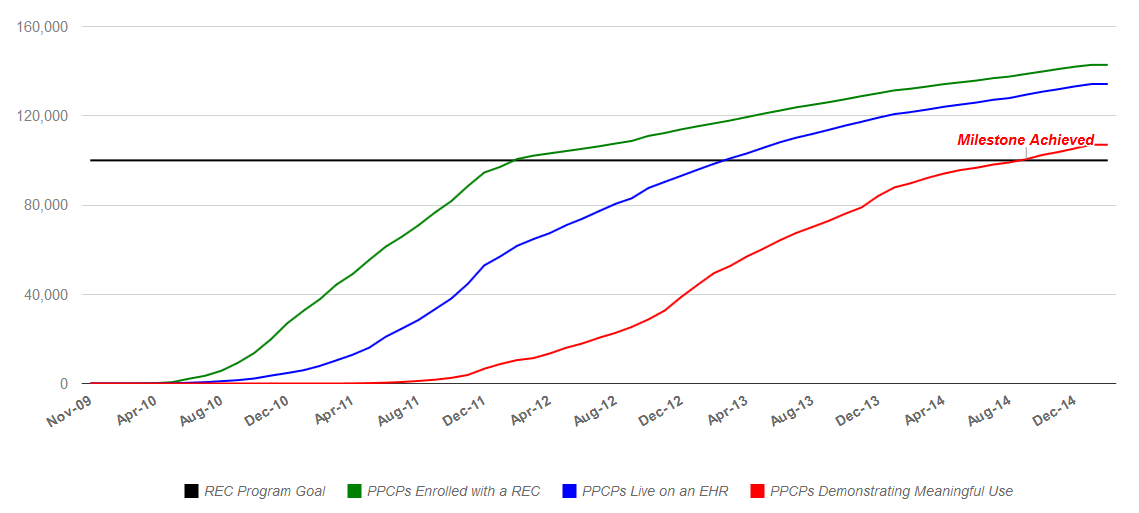
As of January 2016, the REC program has exceeded its target to enroll and assist 100,000 priority primary care providers (PPCPs) to demonstrate meaningful use (MU) of certified EHR technology (CEHRT). RECs support providers' adoption of CEHRT and…
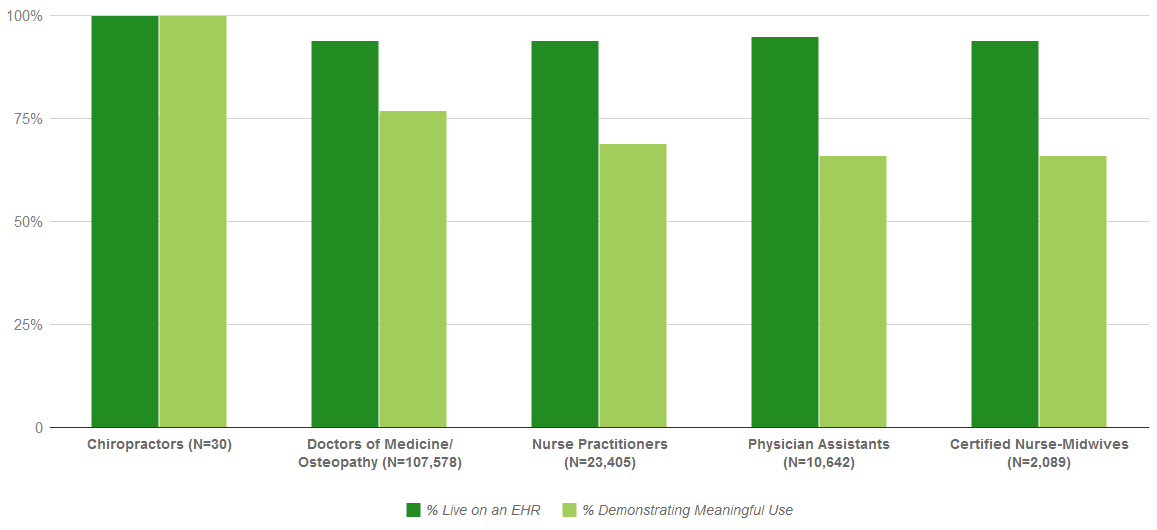
Over 90 percent of all REC enrolled primary care providers are live on an EHR, with three-quarters demonstrating meaningful use (MU) of certified EHR technology (CEHRT). The majority of REC enrolled primary care providers are medical doctors or doctors…
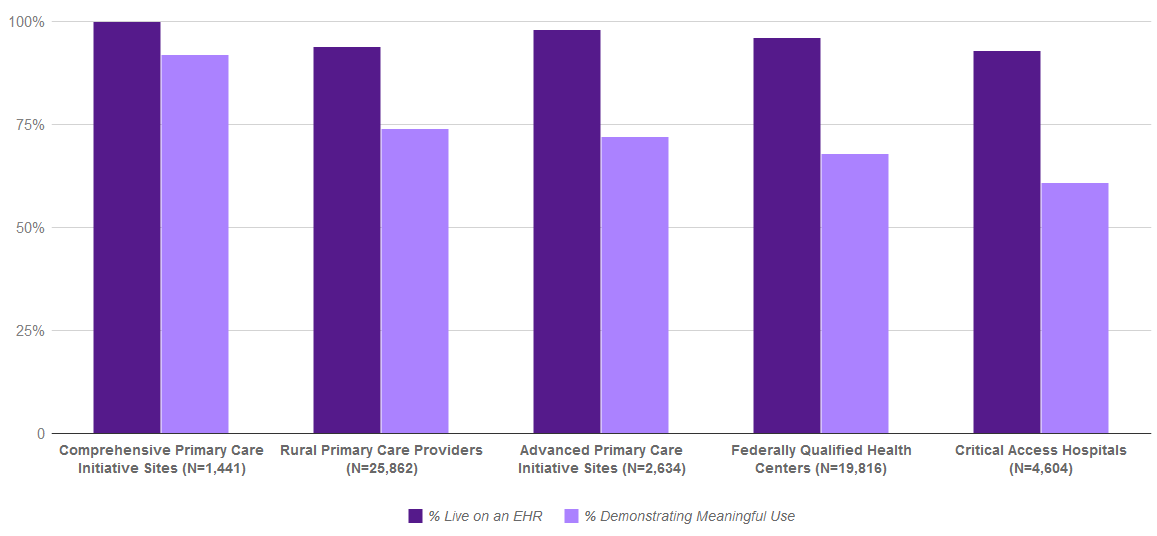
Regional Extension Centers (RECs) are working with over 80 percent of Critical Access Hospitals (CAHs) nationwide as well as supporting practices participating in additional delivery system reform and payment models. RECs are supporting over 80 percent…
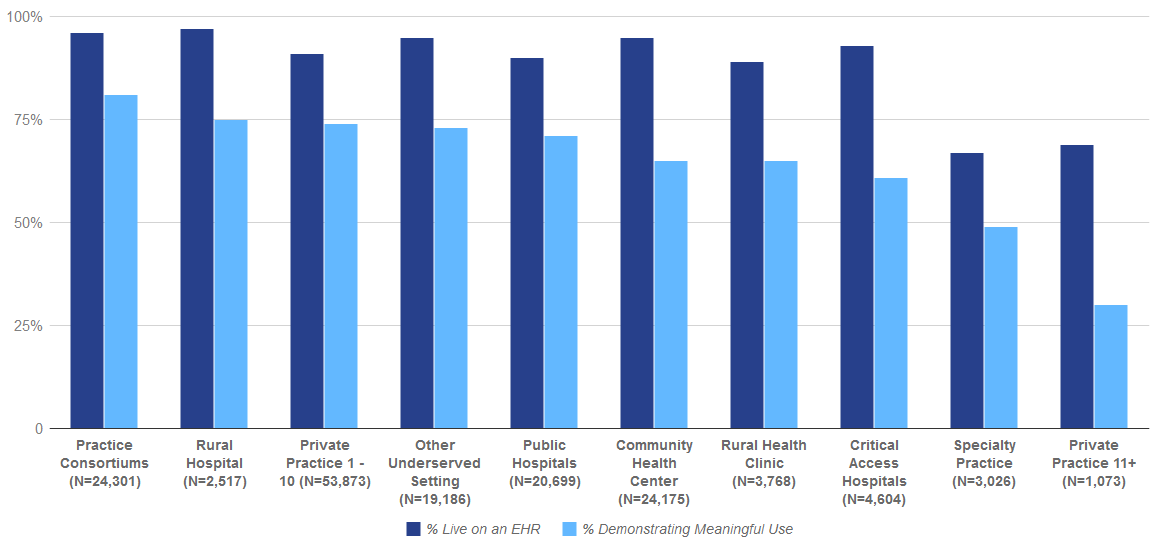
Over 90 percent of Regional Extension Center (REC) enrolled providers are live on an EHR, with three-quarters of enrolled providers demonstrating meaningful use (MU) of certified EHR technology (CEHRT).
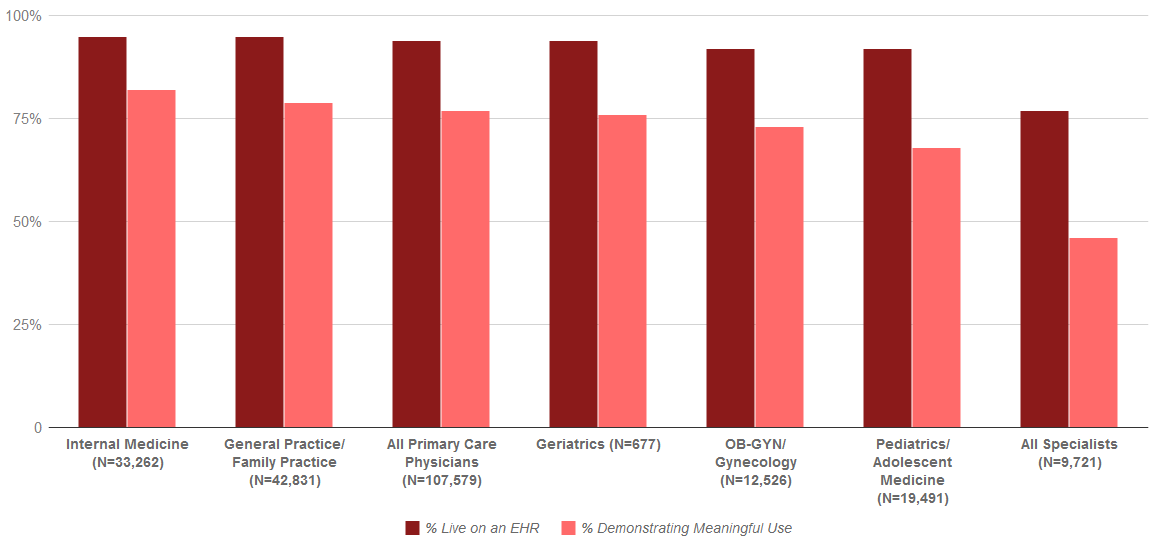
Over 90 percent of REC enrolled physicians are live on an EHR, and over 75 percent have demonstrated meaningful use (MU) of certified EHR technology (CEHRT). General Practice/Family Practice and Internal Medicine physicians comprise over 70 percent of…

